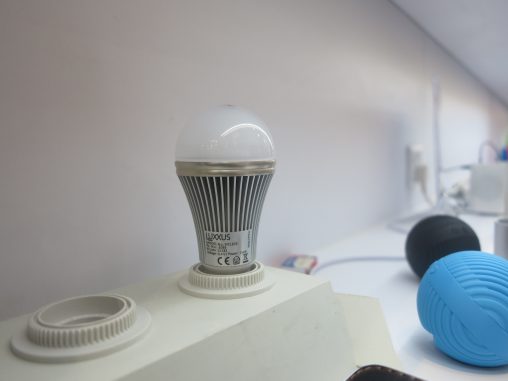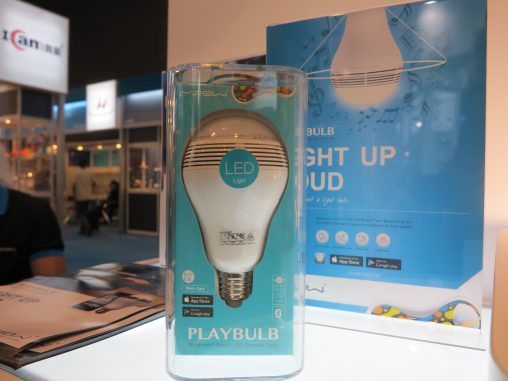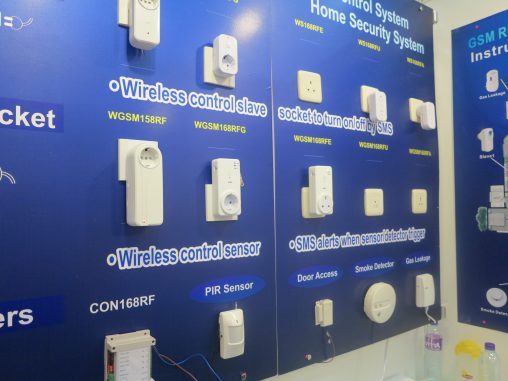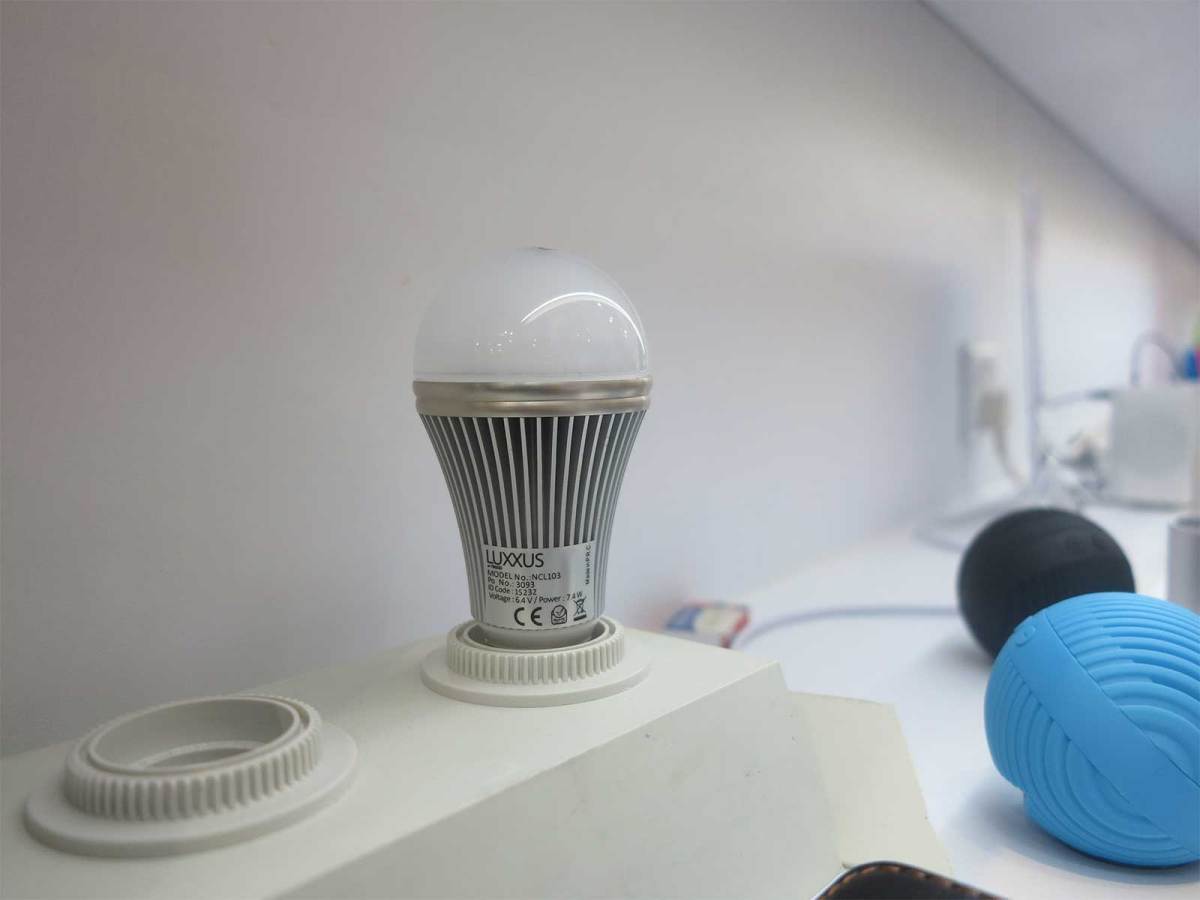Hong Kong
For years, ‘upgrading’ your house into a Smart Home has often been reserved for those who simply must be at the cutting edge of technology or for concept builds of ‘The House of Tomorrow’. However, at this year’s Hong Kong Electronics Fair and International ICT Expo, a new breed of Smart Home devices have emerged. Small and requiring no technical know-how to install and use, they may be the push the home automation industry needs to flourish in the average home.
Though the idea of a smart home has been around for some years it has often only been in the form of high-concept display homes or in devices designed to control one aspect of a home’s ecosystem (such as setting water temperature, or controlling a house-wide music system). However, these products often fell afoul of two particular problems, stopping home automation becoming as widespread as The Jetsons predicted: location and installation.
One of the major selling points of home automation is convenience of use, however most systems relied on being controlled by a touchscreen panel on a wall. Some of the mystique of rigging your lights to a special automation screen is lost when you still need to get off the couch and go to a wall to turn the lights on or off, much like if there was just a simple switch.
The second issue, and perhaps the biggest, is installation. Most smart home systems are controlled by a wall panel and as such they require specially trained technicians (essentially, electricians) to install them. Each unit needs to be connected not only to mains power but to all the devices the panel is designed to control. Your average user wouldn’t have the skills to set up a system by themselves and, as anyone who has wanted to renovate a home knows, skilled labour isn’t cheap.
However, this year’s expo has seen the rise of a series of devices designed to mitigate those two problems. The new generation eliminates both issues with one idea: smartphone integration. Instead of being controlled by a static panel a user simply downloads an app onto their smartphone or tablet, syncs them with the automation devices via Bluetooth and they are ready to go in seconds: house-wide control from the comfort of the couch.

One example of this new generation of smart home devices is from Dutch company Nikkei. Their flagship product, the Luxxus, is a light bulb with a colourful twist. Once set up it can be easily controlled via a downloadable app (for both iOS and Android), and a single bulb right up to a whopping 32 bulbs can be controlled at one time.
However, the Luxxus doesn’t just turn on and off. It is also able to shine light in more than 16 million shades of colour.
Using micro LEDs inside the bulb, and using a handy colour wheel in-app, a user can change the mood lighting in their house at will by turning on their smartphone; from a single light, to a whole room, to the entire house.
What is particularly special about the Luxxus is that it doesn’t require a special light fitting to install: each bulb can simply screw into most existing casings and is compatible with adapters. This means that a user doesn’t need to hire someone to install every bulb if they were interested in home automation. This elimination of both cost and time makes turning a home into a mood-lit paradise all the more appealing to potential buyers.

Another light-based device is the Playbulb, manufactured by Mipow. While it can’t light a house with all the colours of a New Orleans jazz club (though you can easily dim the lights using the smartphone app), the Playbulb does something equally as remarkable: each bulb is a set of Bluetooth speakers.
Like the Luxxus, the Playbulb is controlled with an easy to use app and fits into the majority of light fixtures. However, once connected the user is able to stream music from their smartphone to one or many bulbs on the home network. This means that an entire house can be awash in music without setting up a single stereo. And as the Playbulb is semi-durable, it’s perfect for outdoor use if placed in a sheltered fixture.
Other features include night mode (where you can play music, on a timer if you wish, while the light is off) and an alarm system which can turn on the lights and/or play music from the connected smart phone to wake you up.
Click here to sign up for our free daily newsletter
While the ease of use and installation of both the Luxxus and Playbulb makes home automation appealing to potential customers, it also has applications in the world of business. A restaurant or function centre would be able change their lighting states by room to fit the mood of an evening. Any office or retail outlet can now have music store-wide without installing wired or wireless speakers.

Chinese company Hope and their flagship product, the GSM Power Socket, take the appeal to businesses a step further by offering the ability to connect almost any device in an office to the Smart Home network. Instead of making specific devices that perform smart functions, the GSM Power Socket (as the name suggests) controls the power point itself. Groupings of equipment are able to be activated or powered down at the same time or individually, simply by connecting ‘slave’ Power Sockets (which have been attached to whatever devices you choose) to one controller, and then syncing that with a smartphone app.
However, the features aren’t just limited to powering up and down. The Power Socket can also be programmed to act on its own accord and communicate back to the user. Timetables can be set up to turn specific Power Sockets on and off at certain times while separately bought sensors allow, for example, a smoke detector to remotely inform the user of a potential fire.
What takes the GSM Power Socket one step further is that communication between user and home is not confined to the home. Each Power Socket back can be fitted with a SIM card, like the one found in most phones, and can text the user wherever they are. On the flip side, the user is able to call or text individual devices to have them turn on or off. A fire starting from a still-running stovetop is a bit less likely to occur when the oven can tell you it was left on and can be turned off wherever you have reception.
With this new ultra-portable, easy to use and simple to install home automation generation gearing up to begin retailing world-wide soon, we may very well be living in Smart Homes or working in Smart Offices sooner than we can imagine.

